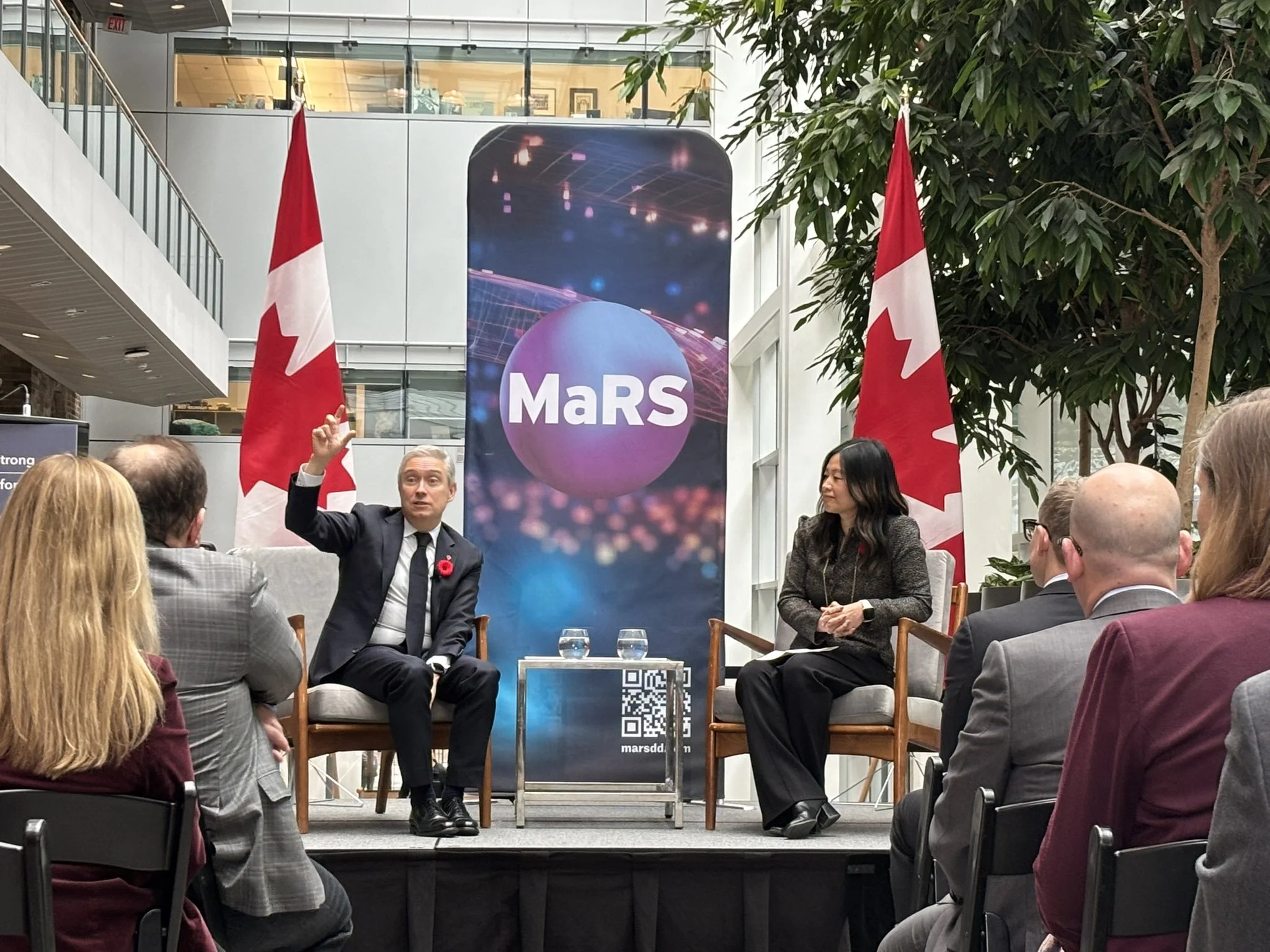Macklem holds at 2.75%, cites ‘unusual uncertainty’
Bank of Canada Senior Deputy Governor Carolyn Rogers and Governor Tiff Macklem at a press conference Wednesday making an interest rate announcement. BANK OF CANADA SCREENSHOT
Amid a “softer but not sharply weaker” Canadian economy and signs of “firmness in recent inflation data,” the Bank of Canada opted to keep its benchmark interest rate unchanged at 2.75% on Wednesday, its second consecutive pause following a string of rate cuts earlier this year.
“The path of the BoC will be largely determined by the extent of further softening in the economy,” said Claire Fan, economist at RBC. She noted that while GDP growth surprised to the upside in Q1, much of that strength stemmed from tariff front-running, which could set the stage for a pullback in the months ahead. “The unemployment rate has risen as hiring scales back broadly while manufacturing sees significant job losses,” she added.
The Bank acknowledged these crosscurrents in its policy statement, with Governor Tiff Macklem citing “unusual uncertainty” as the rationale for holding steady. “Governing Council decided to hold the policy rate as we gain more information on U.S. trade policy and its impacts,” Macklem said. “We will continue to assess the timing and strength of both the downward pressures on inflation from a weaker economy and the upward pressures on inflation from higher costs.”
Outlook for rates
Macklem emphasized that the Bank’s current analysis is “less forward-looking than usual” and should not be taken as guidance. In a press conference, he added that the Bank hopes to return to its regular forecasting framework by the time of its next rate decision on July 30.
The latest decision leaves the overnight rate in the middle of the BoC’s estimated neutral range of 2.25% to 3.25%. While the central bank refrained from easing this time, market expectations still point to as many as two rate cuts later this year.
Royce Mendes, managing director and head of macro strategy at Desjardins Capital Markets, wrote that “Canadian central bankers chose to kick the can down the road by holding rates steady in the face of still-elevated uncertainty.” While acknowledging the Bank’s concern over inflation, Mendes argued that “the rationale for holding rates steady today is already on shaky ground.”
Tariff pressure
The U.S. tariff environment remains a key source of pressure. The average tariff rate on Canadian exports to the U.S. is now estimated at 4.5%, well above the 1% rate assumed in the BoC’s more optimistic April forecast. Canada’s trade deficit hit a record $7.1 billion in April, while in May, President Donald Trump doubled tariffs on Canadian steel and aluminum to 50%.
Fan noted that while the economy is feeling the strain from tariffs—especially in trade-exposed sectors like manufacturing and transportation—some indicators have held up better than feared. “Our own tracking of RBC card data pointed to a solid increase in April spending. Job postings… looked to have bounced back, according to early data from Indeed.com,” she said.
Still, inflation remains a wildcard. April’s core CPI came in hotter than expected, but the gains were concentrated in domestic service categories, not those directly exposed to tariffs. “It’s still too early to tell,” Fan said. “A flare-up at the onset of tariffs sets a bad starting point for inflation trends later this year.”
Business intel
Governor Macklem acknowledged the challenge of disentangling tariff-driven effects from broader inflationary pressures. “We’re relying more on soft data and intel from businesses,” he said, pointing to early signs of cost increases. But for now, he added, longer-term inflation expectations remain “well anchored.”
Economist David Rosenberg was critical of the Bank’s cautious approach. “The Canadian economy may not be collapsing, but to suggest that it is not fundamentally weak and expanding below its non-inflationary potential is foolhardy at best,” he said. “The less policymakers do now, the more they will have to do later.”
The BoC will have two more CPI readings to consider before its next meeting. Until then, Macklem said, the Bank is focused on cutting through the “fog” of economic crosscurrents — hoping for clearer conditions before making its next move.






